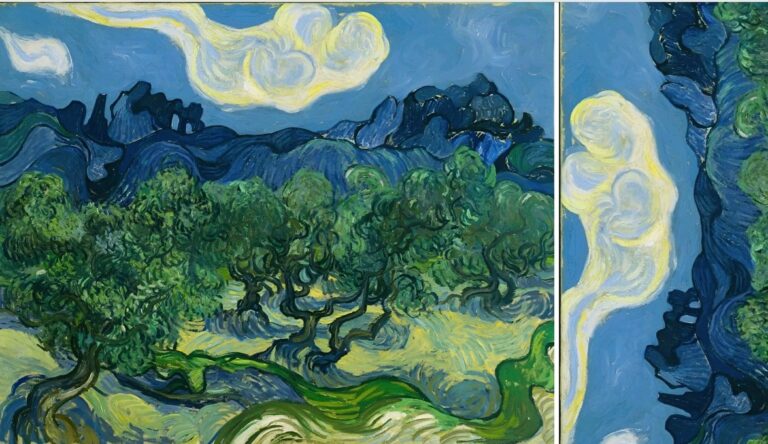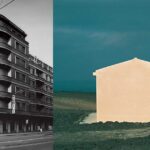[P]aul Gauguin, in Chiacchiere di un imbrattatele, espone l’autobiografia di un artista negli anni del disincanto e della solitudine. Lo vorrebbe pubblicare nel 1902, un anno prima della morte, ma il manoscritto gli viene rifiutato. Dunque (datato Atuana, 1902), il libretto trattiene il sapore e il valore di un testamento arrabbiato. Ecco, forse da ciò proviene il disincanto nervoso e l’esigenza di dichiarare la fatica e la supremazia della solitudine.
L’inizio è quasi deviante, incentrato sul rapporto tra artista e critica; allude a un saggio, che parrebbe sacrificato totalmente alla morsa del duello tra chi crea e chi interpreta, tra il potere della genialità e il potere della comunicazione. Gauguin non sfugge alla trappola di amare la critica che lo ama e di disprezzare la critica che lo disprezza. Di utile vi è la cronaca di nomi e cognomi, dei buoni e dei cattivi, la lista di proscrizione dei critici e dei colleghi. Però è definitivo nello studio del rapporto tra arte e critica quando scrive: “…Il critico ci insegna a pensare: riconoscenti vorremmo insegnargli a nostra volta qualcosa. Impossibile: sa già tutto”.
La colpa di un’assolutezza, di un dogma starebbe sul terreno dell’interpretazione, non della creazione. Gauguin denuncia la superbia di un certo modo di essere critico. Prendete, per esempio, ci ricorda, Camille Mauclair. Sul Mercure de France definì “coloniale” l’arte di Gauguin e insolentì la pittura impressionista, salvo saltare sul carro dell’impressionismo vincitore quando ci si arrese al trionfo della sua esplosione. Definì volgare l’arte di Pissarro, aggiungendo che i suoi paesaggi mancavano di luce e che il tono generale era spesso scialbo e senza intensità; scrisse, contemporaneamente, un libro sull’arte degli ebrei annoverandovi anche Pissarro.
Gauguin a tale proposito annota: “Vede, signor critico, Pissarro è un fanciullo che ha avuto diversi figli e che è sempre rimasto vergine malgrado la seduzione del denaro e della fama. E’ ebreo, è vero! Ma oggi ci sono tanti onesti ebrei che sono uomini superiori. Lei non ha la pretesa di aver scoperto Cézanne. Ma oggi l’ammira. Ammirandolo (e per farlo bisogna capirlo), dice: ‘Cézanne è monocromo’. Avrebbe dovuto dire policromo e perfino polifonico. Con l’occhio e con l’orecchio! Lei aggiunge: ‘Cézanne non deriva da nessuno: si accontenta di essere Cézanne!’. Si sbaglia, altrimenti non sarebbe il pittore che è”.
L’inizio è pure il finale, e riguarda la questione della critica artistica: “La critica è la nostra censura – Vedetta sempre all’erta!”. Nel saggio Chiacchiere di un imbrattatele, originalmente intitolato Racontars de rapin, si riconoscono gli effetti di Gauguin, nato nella Parigi del 1848, vissuto in una famiglia borghese – il padre è giornalista, la madre ha buone parentele – senza danari liberatori. Nel carattere anarcoide di Paul, questa incertezza economica è una spinta a rompere con l’obbedienza e la burocrazia dei Salon.
Un 1848 che assomiglia al 1968. Gauguin, per molti versi, a parte una marcata verve familiare, ricca di figli, si sovrappone al Pier Paolo del nostro passato prossimo. Pasolini-Gauguin, è improponibile? E’ improponibile il loro comune controcorrente, la solitudine, una rabbia con nomi e cognomi, l’abbraccio dello scandalo come compagno di viaggio, e la pretesa di liberarsene investendolo di un’originalità, di un valore? Gauguin ha l’occasione e quindi sceglie di partire, Pasolini resta. Gauguin dipinge, Pasolini scrive.
E, per il francese, è una differenza influente. Così come si legge sempre in Chiacchiere di un imbrattatele, “le emozioni del pittore o dello scultore, del musicista sono di tutt’altro ordine rispetto a quelle dell’arte letteraria; dipendono dalla vista, dall’udito, dalla sua intera natura istintiva, dalle sue lotte con la materia…”. Gauguin enuncia la superiorità non tanto della pittura quanto del pittore sul letterato. La somiglianza storica e l’attualità del saggio continuano nel raffronto misterioso 1848-1868, quando il vento della storia, che è respiro e movimento della persona, di ogni persona, determinò, alla velocità e al rischio più elevato, i destini di chi ci visse dentro.
Poi, Gauguin si sposta nelle terre della dolcezza esotica. Ascoltate il suo racconto lento e avvolgente come il virare voluttuoso e largo della sua pittura: “Qui nella boscaglia ho come vicino un vecchio che la morte stessa sembra disdegnare. Il tatuaggio che porta lo rende spaventoso almeno quanto la sua magrezza. Fu condannato anni addietro per antropofagia, poi lo rilasciarono prima che avesse scontato per intero la pena. Un mattacchione di capitano italiano, che mi era affezionato, gli raccontò che ero stato io, un tempo potente, a intercedere in suo favore… Il vecchio, che non si è mai riusciti a battezzare ed è considerato da tutti uno stregone, ha messo sulla mia persona e sulla mia casa il Tabù, il che significa che io sono sacro”.
Traspare una dichiarazione d’amore nei confronti della riapparizione primordiale, la coscienza che la vita abbia un senso diverso quando abiti a Fatuiva e tutto quanto ti appartiene è “la mia semplice capanna in bambù; un piccolo spazio: un sentiero”.
Gauguin testamenta la religiosa bellezza del vecchio antropofago e della donna, dell’acqua, del cielo e dell’isola. Poi accenna e non definisce completamente una risorsa da Est, di tatto evangelico in funzione pittorica. Scrive: “E il pittore orientale dice ai suoi discepoli: ‘Non rifinite mai troppo; così facendo raffreddate la lava di un sangue ribollente, ne fate una pietra. Fosse anche un rubino, gettatela lontano da voi’”.
Infine il lascito del giudizio, qualche pagella. Dice Gauguin, nel finale del saggio: “Riepilogando l’opera della seconda parte del XIX secolo citerei qualche nome tra i più importanti: Corot, Daumier, Rousseau, Millet, Degas, Puvis de Chavannes, Fantin-Latour, Cazin, Gustave Moreau, Carrière. Tra gli Impressionisti: Caillebotte, Renoir, Claude Monet, Pissarro, Guillaumin, Berthe Morisot, miss Cassatt, Sisley, Cézanne. Tra i neoimpressionisti: Seurat, Signac, Angrand, Luce, Rysselberghe, Anquetin, Bonnard, Vuillard, Roussel, Ranson, Maillol, Daniel, Filiger, Séguin, Maurice Denis, De Groux, Odilon Redon, Sérusier, Toulouse-Lautrec, Van Gogh”. (tonino zana)
Paul Gauguin, Chiacchiere di un imbrattatele, Abscondita, 80 pagine, 11 euro.
IN DUE GIORNI LAVORATIVI PUOI RICEVERE “CHIACCHIERE DI UN IMBRATTATELE” DI GAUGUIN COMODAMENTE A CASA. CLICCA QUI SOTTO PER PROCEDERE ALL’ORDINE DEL VOLUME DI GAUGUIN
[button color=”green” size=”small” link=”http://www.libreriauniversitaria.it/chiacchiere-imbrattatele-gauguin-paul-abscondita/libro/9788884160232″ target=”blank” ]Paul Gauguin, Chiacchiere di un imbrattatele[/button]
This article has been traslated by http://translate.google.it/
[P]aul Gauguin, in Chatter of a dauber, exposes the autobiography of an artist over the years of despair and loneliness. I would like to publish in 1902, a year before his death, but the manuscript he was refused. So (dated Atuana, 1902), the book retains the flavor and the value of a testament angry. Well, perhaps this comes from the disenchantment nervous and the need to declare the supremacy of fatigue and loneliness.
The beginning is almost deviant, focuses on the relationship between artist and critic; alludes to an essay, which seems totally sacrificed the grip of the duel between those who create and those who interprets between the power of genius and the power of communication. Gauguin did not escape the trap of loving criticism that she loves him and despise the critics who despises him. Useful there is the record of names and surnames, the good and the bad, the blacklist of critics and colleagues. But it is the definitive study of the relationship between art and criticism when he writes: “… The critic teaches us to think: we would like to teach grateful in our turn something. Impossible: he already knows everything. “
The fault of absoluteness, of a dogma would be on the ground of interpretation, not of creation. Gauguin denounces the pride of a certain way of being critical. Take, for example, reminds us, Camille Mauclair. On the Mercure de France described as “colonial” the art of Gauguin and insolent Impressionist painting, except jump on the bandwagon of Impressionism winner when we surrendered to the triumph of his explosion. He called the vulgar art of Pissarro, adding that its landscapes lacked light and that the general tone was often dull and without intensity; wrote, at the same time, a book on the Jewish annoverandovi also Pissarro.
Gauguin in this regard: “You see, Mr. critic, Pissarro is a child who has had several children, and that has always remained a virgin despite the seduction of money and fame. And ‘jew, it’s true! But today there are many honest Jews are superior men. She does not claim to have discovered Cézanne. But today admires. Admiring it (and to do that you have to figure it out), says: ‘Cézanne is monochrome’. He should have said polychrome and even polyphonic. With the eye and the ear! She adds: ‘Cézanne does not come from anyone, is content to be Cézanne!’. You’re wrong, otherwise it would not be the artist he is. “
The beginning is also the end, and the question of art criticism: “Criticism is our censorship – Crewed always on the alert.” In the essay chatter of a dauber, originally titled Racontars de kidnap, recognize the effects of Gauguin, born in Paris in 1848, lived in a middle class family – his father is a journalist, the mother has good relationships – without money liberators. In the anarchic character of Paul, this economic uncertainty is a push to break through obedience and the bureaucracy of the Salon.
A 1848 which is similar to 1968. Gauguin, in many ways, apart from a strong family verve, full of children, is superimposed on the Pier Paolo of our recent past. Pasolini-Gauguin, it is impossible? It ‘impossible their common counter, loneliness, anger with names and surnames, the embrace of the scandal as a traveling companion, and the attempt to get rid of investing it with an originality, a value? Gauguin has the opportunity and then choose to leave, Pasolini remains. Gauguin painted, Pasolini writes.
And, for the French, is a difference influential. So as you read in Chatter always a dauber, “the emotions of the painter or the sculptor, the musician are of a different order than those of literary art; depend on sight, the hearing, his whole nature instinctive, from his struggles with the matter … “. Gauguin sets out the superiority of painting not so much because of the painter on the letters. The similarity of the historical and current wise comparison mysterious continue in 1848-1868, when the wind of the story, which is breathing and movement of the person, of every person, determined, and the speed at higher risk, the destinies of those who lived inside.
Then, Gauguin moved to the lands of exotic sweetness. Listen to his story slow and enveloping as the voluptuous and veer off of his painting: “Here in the bush as I close an old man who seems to despise death itself. The tattoo that brings makes it scary as much as its thinness. He was sentenced years ago to cannibalism, then released him before he had granted to the whole sentence. A joker of Italian captain, I was fond of him, told him it was me, once powerful, to intercede in his favor … The old man, who has never been able to baptize and is widely regarded as a sorcerer, put on my person and my home Taboo, which means that I am holy. “
Shines a declaration of love against the reappearance of primordial consciousness that life has a different meaning when you live in Fatuiva and all that belongs to you is “my simple hut made of bamboo and a small space: a path.”
Gauguin testamenta the religious beauty of the old cannibal and woman, water, sky and island. Then mentions and not completely defines a resource from the East, feel Gospel according pictorial. He writes: “And the Oriental painter says to his disciples: ‘Do not ever finished too, in so doing cooled lava from a boiling blood, ye make a stone. Was also a ruby, throw it away from you. ‘”
Finally, the legacy of judgment, some report card. Gauguin says, in the end of the essay: “Summing up the work of the second part of the nineteenth century would mention a few names of the most important: Corot, Daumier, Rousseau, Millet, Degas, Puvis de Chavannes, Fantin-Latour, Cazin, Gustave Moreau, Carrière. Among the Impressionists: Caillebotte, Renoir, Claude Monet, Pissarro, Guillaumin, Berthe Morisot, Miss Cassatt, Sisley, Cézanne. Among the Neo-Impressionists: Seurat, Signac, Angrand, Light, Rysselberghe, Anquetin, Bonnard, Vuillard, Roussel, Ranson, Maillol, Daniel, Filiger, Séguin, Maurice Denis, De Groux, Odilon Redon, Sérusier, Toulouse-Lautrec, Van Gogh ” .
Paul Gauguin, Chiacchiere di un imbrattatele, Abscondita, 80 pagine, 11 euro.








